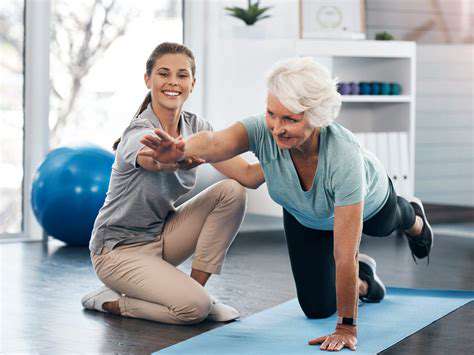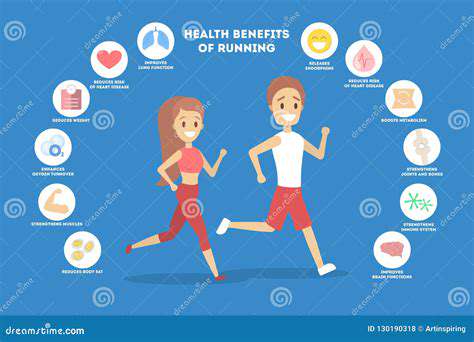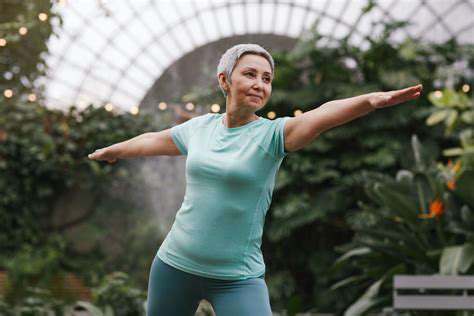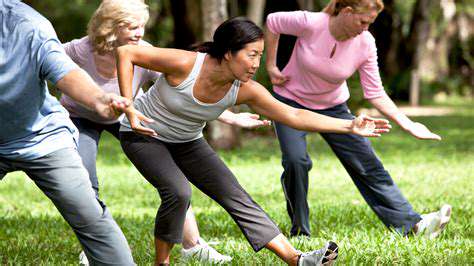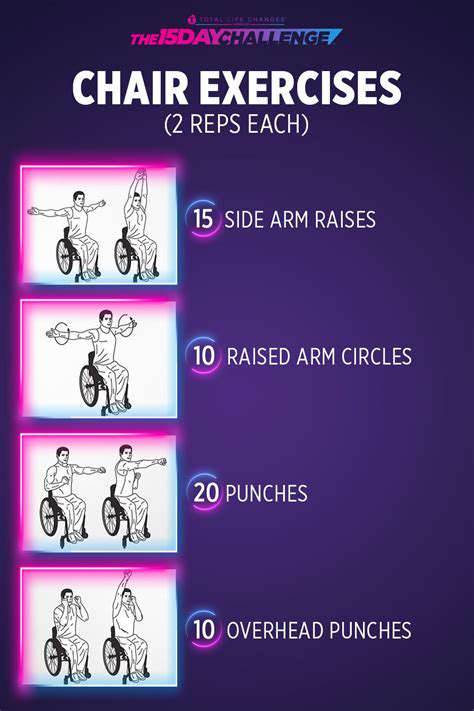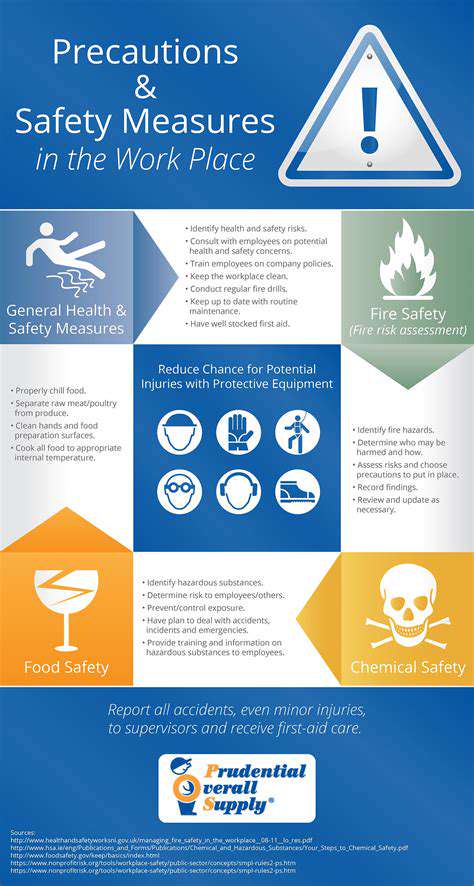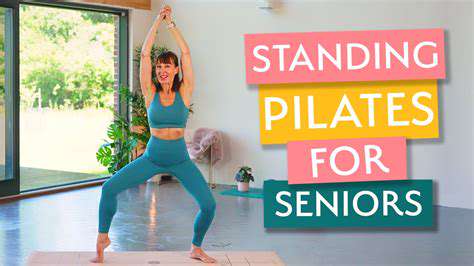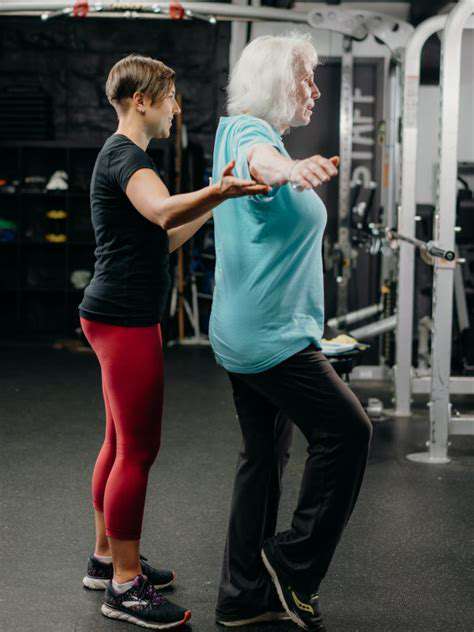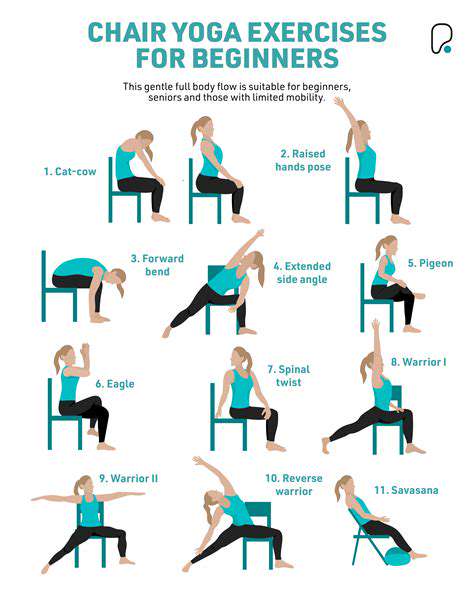A Beginner's Guide to Functional Training at Home for Seniors
Plank variations are excellent for building core strength without putting excessive stress on joints. A simple plank involves holding your body in a straight line from head to heels, resting on your forearms and toes. Beginners can start with shorter durations, gradually increasing the hold time as strength improves. Modifications like forearm planks on knees provide a gentler introduction to the exercise.
Side planks are another effective variation that targets specific core muscles. They strengthen the obliques, promoting stability and reducing the risk of falls. Keeping your body aligned, from head to heels, is crucial for proper form and effectiveness.
Exercises for Improved Balance and Stability
Balance exercises are essential for seniors to maintain stability and prevent falls. Simple exercises like standing on one leg while holding onto a sturdy chair, or performing heel-to-toe walks, can effectively improve balance. These exercises, when performed regularly, can significantly reduce the risk of falls and improve overall mobility and independence.
Consider using a balance board or wobble cushion for added challenge and progression. These tools can help improve proprioception, which is the body's awareness of its position in space, further enhancing balance and stability.
Benefits of Incorporating Core Work into Daily Life
Incorporating core strengthening exercises into your daily routine can significantly improve overall well-being. Simple activities like carrying groceries, gardening, or playing with grandchildren can become easier and more enjoyable with a strengthened core. This increased functional strength translates into greater independence and participation in daily activities.
Furthermore, a strong core contributes to better posture, reducing back pain and discomfort, and promoting a more confident and active lifestyle. It's a key component in maintaining a high quality of life as we age.
Choosing the Right Exercises for Your Needs
When selecting core strengthening exercises, it's crucial to consider individual needs and limitations. Consult with a healthcare professional or a certified physical therapist to determine suitable exercises based on your specific physical condition and medical history. They can provide personalized guidance and recommendations to prevent injuries and maximize the benefits of exercise.
Start slowly and gradually increase the intensity and duration of exercises. Listen to your body and adjust the exercises as needed. Consistency and proper form are key to achieving optimal results and preventing injuries.
Progressive Overload and Exercise Progression
Progressive overload is a fundamental principle in exercise that involves gradually increasing the demands on your muscles over time. For seniors, this means gradually increasing the intensity, duration, or difficulty of core exercises as strength and endurance improve. This progressive approach ensures continuous muscle growth and prevents plateaus in strength development.
As strength increases, you can progress to more challenging variations of exercises, such as using resistance bands or incorporating more dynamic movements. This continuous progression is essential for maintaining a challenging and effective workout routine that keeps the body engaged and continues to improve strength and fitness.
Balance and Mobility Exercises
Warm-up Exercises for Enhanced Mobility
Before diving into balance and mobility exercises, a Proper warm-up is crucial to prepare your muscles and joints. Light cardio, such as a brisk walk or jumping jacks for a minute or two, gets your blood flowing. Dynamic stretching, like arm circles, leg swings, and torso twists, further prepares your body for the more demanding exercises to follow. This warm-up period should take approximately 5-10 minutes, ensuring your body is ready to engage in the exercises safely and effectively.
A good warm-up significantly reduces the risk of injury during the workout and helps improve the range of motion in your joints. It also increases blood flow to your muscles, which enhances their performance and flexibility.
Single-Leg Balance Exercises
Single-leg balance exercises are fundamental for improving stability and proprioception. Start by standing with your feet together and slowly shift your weight onto one leg, keeping your core engaged. Maintain a neutral spine and focus on a fixed point in front of you to maintain balance. Hold this position for as long as you can comfortably, gradually increasing the duration as you improve. Repeat on the other leg. Variations include balancing on a foam pad or pillow to challenge your balance further.
Heel-Toe Walking
Heel-toe walking is an excellent exercise for improving balance and coordination. Imagine drawing a line on the ground with your heels and toes. Walk slowly, placing each heel directly in front of the toe of the other foot. Keep your back straight and your core engaged throughout the exercise. This exercise improves your proprioception, strengthening the muscles involved in balance and gait.
Chair Squats for Lower Body Strength
Chair squats are a great way to build lower body strength while maintaining balance. Place a sturdy chair in front of you. Stand a few inches away from the chair and slowly lower your body as if sitting in the chair. Pause at the bottom and then push back up to the starting position. Ensure your knees don't extend past your toes. Repeat this exercise for several sets.
This exercise strengthens crucial muscles for everyday activities, such as walking and climbing stairs. Gradual increases in repetition numbers are recommended for better results and improved lower body strength.
Side Lunges with a Reach
Side lunges with a reach are a great exercise to improve lateral mobility and balance. Step to the side with one leg, bending the knee and keeping the other leg straight. Simultaneously, reach towards the ground with the opposite arm. Ensure your knee remains aligned with your ankle. Return to the starting position and repeat on the other side. This exercise strengthens the muscles that control your balance and movement in all directions. It also improves flexibility and range of motion.
Standing Knee Raises with Arm Movement
Standing knee raises with arm movements are perfect for improving balance and coordination while engaging your core. Stand with your feet shoulder-width apart, and slowly lift one knee towards your chest. Simultaneously, extend the opposite arm straight out in front of you. Keep your core engaged to maintain balance. Repeat on the other side. This exercise helps improve stability and control, which are essential for many daily activities. Gradually increasing the speed of the movement will help further improve your coordination.
Calf Raises on a Raised Surface
Calf raises on a raised surface, such as a slightly elevated step, are excellent for improving balance and strengthening the calf muscles. Place one foot on the raised surface and lift the other foot off the ground. Slowly raise up onto the ball of your foot, keeping your core engaged and your back straight. Lower your heel back down slowly. Repeat for the desired number of repetitions and then switch legs. This exercise targets the muscles in your lower legs, enhancing stability and balance, which is beneficial for activities that require standing for extended periods.
Sample Workout Routine for Seniors (Beginner Level)
Warm-up Exercises
A proper warm-up is crucial for seniors to prepare their bodies for the workout. It gradually increases blood flow to the muscles, improves flexibility, and reduces the risk of injuries. Start with 5-10 minutes of light cardio, such as brisk walking or chair-based arm and leg movements. Gentle stretching exercises, like arm circles, leg swings (if mobility allows), and torso twists, should follow. Remember to listen to your body and stop if you feel any pain.
These warm-up exercises are vital for seniors to improve blood circulation to the muscles and prepare them for the workout. They help prevent injuries and improve flexibility. Incorporate activities like marching in place, shoulder rotations, and neck stretches into your warm-up routine. Make sure to perform each movement slowly and deliberately to maximize the benefits of the warm-up.
Cardiovascular Activities
Cardiovascular exercises are essential for maintaining heart health and overall fitness. For seniors, low-impact options like walking, swimming, or using an elliptical machine are excellent choices. Aim for at least 30 minutes of moderate-intensity cardio most days of the week. Walking at a brisk pace, for instance, can be a highly effective cardiovascular exercise for seniors. Even simple activities like gardening or dancing can contribute to cardiovascular health.
Incorporating cardio exercises into your routine is crucial for maintaining heart health and overall well-being. Choose activities that you enjoy and can sustain for a reasonable duration. Remember to listen to your body and adjust the intensity as needed. Consult your doctor before starting any new exercise program.
Strength Training Exercises
Strength training is vital for seniors to maintain muscle mass and bone density. It helps improve balance, coordination, and reduce the risk of falls. Use light weights or resistance bands for exercises like bicep curls, triceps extensions, and leg presses. Focus on controlled movements and proper form to avoid injuries. Chair-based exercises can also be very effective for building strength in a safe and controlled environment.
Strength training for seniors is about building strength and endurance safely. Start with lighter weights and gradually increase the resistance as you get stronger. Always prioritize proper form and controlled movements to avoid injuries. Incorporate exercises that target all major muscle groups for optimal results.
Flexibility and Balance Exercises
Flexibility and balance exercises are crucial for preventing falls and improving mobility. Stretching exercises, such as hamstring stretches, quad stretches, and shoulder stretches, can help improve flexibility. Balance exercises, such as standing on one leg or heel-toe walking, can enhance stability and coordination. These exercises are particularly important for seniors, as they help maintain independence and reduce the risk of falls.
Cool-down Exercises
A cool-down period is essential to gradually reduce your heart rate and allow your body to return to a resting state after your workout. Engage in light cardio, such as slow walking or gentle stretching, for 5-10 minutes. This helps prevent muscle soreness and stiffness. The cool-down period also allows your body to recover from the workout, promoting better overall well-being.
Nutrition and Hydration
Proper nutrition and hydration are essential components of a healthy lifestyle for seniors, especially when combined with exercise. A balanced diet rich in fruits, vegetables, and lean protein is crucial for providing the necessary nutrients for muscle repair and overall health. Adequate hydration is equally important, as it supports various bodily functions and aids in recovery. Consult a registered dietitian or healthcare professional for personalized dietary recommendations.
Safety Precautions
Safety is paramount when exercising as a senior. Always consult your doctor before starting any new exercise program. Listen to your body and stop if you experience any pain. Ensure your workout space is safe and free of hazards. Wear comfortable clothing and appropriate footwear. Consider exercising with a friend or family member for added support and safety. Understanding your limitations and taking precautions will help ensure a safe and enjoyable workout experience.
